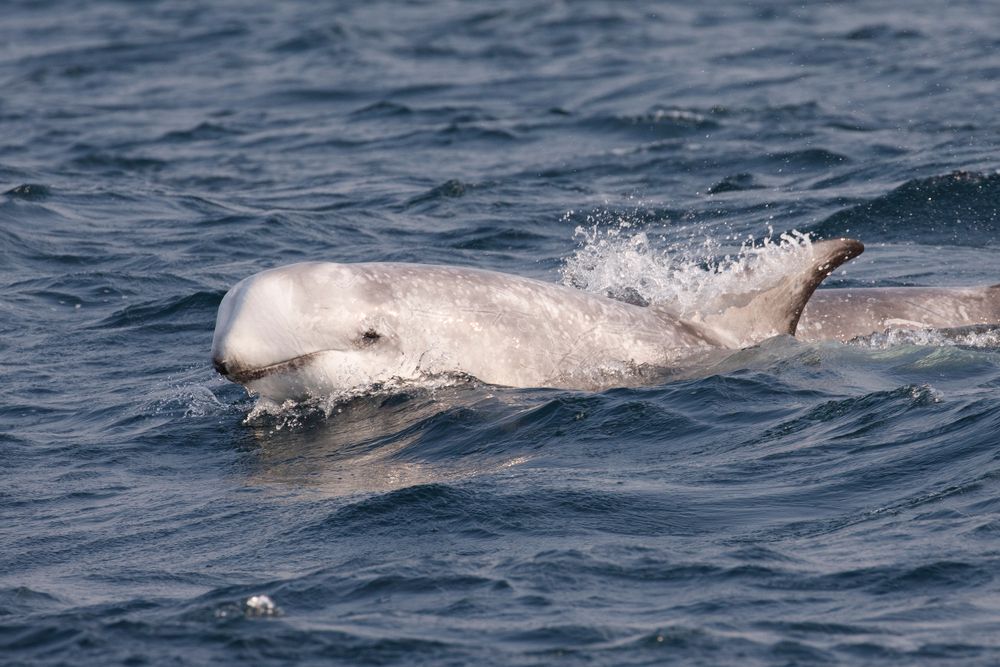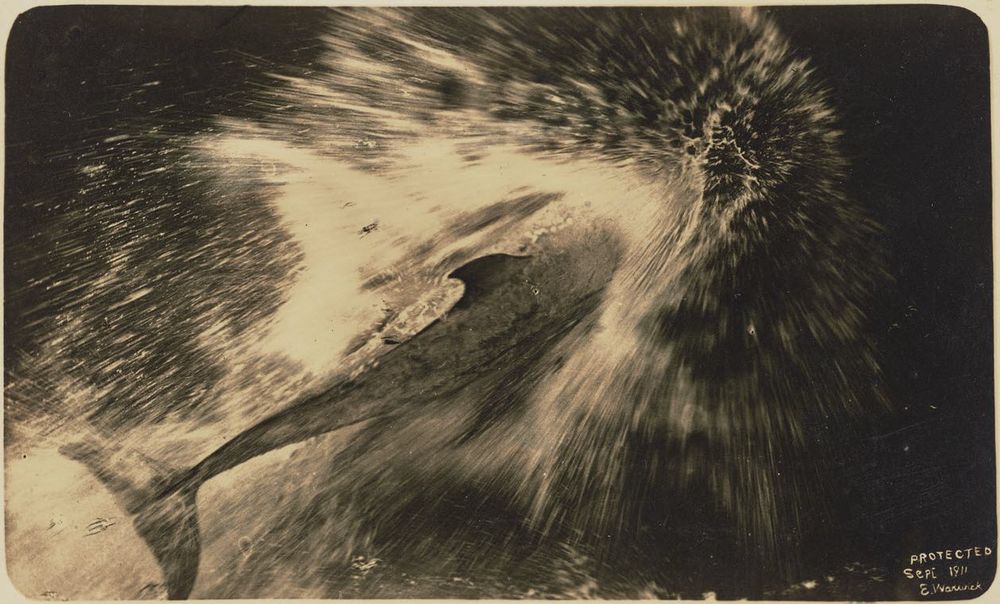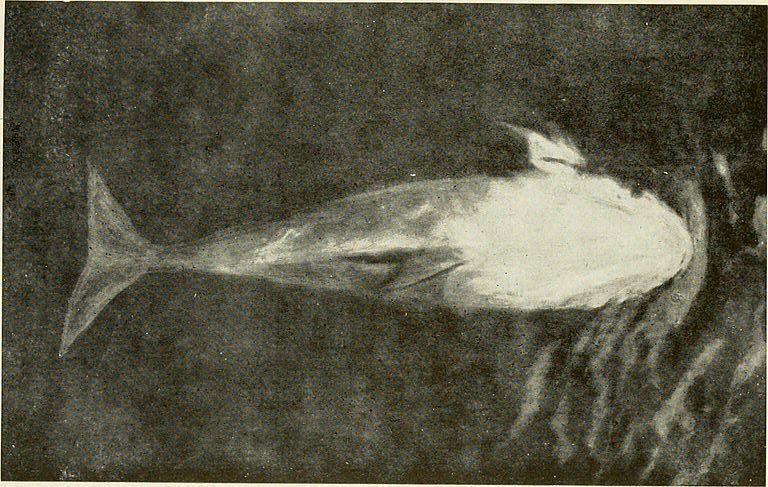The northern end of New Zealand’s South Island is a chaos of bays and sounds, and within this intricate coastline lies a narrow and treacherous stretch of water called the French Pass. Ships avoid it because the currents here are so strong that it can easily drag a vessel and smash it against the rocks. The very first European attempt to navigate through these narrows was a near disaster.
French Admiral Jules Dumont d'Urville was mapping the coast of the South Island in 1827 when he instructed his navigator to enter the pass. Situated between Rangitoto ki te Tonga, also known as D'Urville Island (after the Admiral himself), and the mainland coast, the French Pass saves about 15 miles of distance for those wishing to sail between the North and the South Islands. The alternative is to go around D'Urville Island and through heavy cross seas.

A Risso’s dolphin, the kind Pelorus Jack was of. Photo: Tory Kallman/Shutterstock.com
As d'Urville’s ship Astrolabe, a formidable warship of the French Navy, approached the narrowest part of the pass, the vessel swung sideward and the rising tide took the ship towards the rocky shore. Even as the ship’s crew struggled to regain control of the vessel, Astrolabe struck rocks twice, and was washed over the reef. After the incident, d'Urville suggested that no one should attempt to navigate French Pass except in extreme.
More than sixty years later, the French Pass would became the natural route for ships travelling between Wellington and Nelson. No, ships did not become more navigable, neither did sailors become more skillful. The French Pass remained as ferocious and as perilous as ever. So what changed? The appearance of a dolphin, who, for the next twenty-four years, faithfully escorted steamers through the dangerous waters.
Pelorus Jack

A rare photograph of Pelorus Jack by Edgar Warwick.
Pelorus Jack was a Risso’s dolphin (Grampus griseus), that’s very rarely seen in New Zealand waters. His sex was never positively identified, but from the size of the animal it was ascertained that Jack was most likely a male. Jack was first seen in 1888, when it appeared in front of a schooner as it approached French Pass. The story goes that the crew of the schooner wanted to harpoon him at first, but the horrified captain’s wife talked them out of it. Pelorus Jack then proceeded to guide the ship through the narrow channel staying alongside the ship for 12 hours. And for years thereafter, he safely guided almost every ship that came by.
Jack did not like wooden hulled ships or sailing vessels, but fast-moving steel-hulled steamers attracted him. It was theorized that Jack loved riding the pressure wave generated by the ship’s bow, and steel-hulled ships provided the best bow wave to ride.

Pelorus Jack. Photographed by A. Pitt.
Pelorus Jack got his name from Pelorus Sound, a long winding watery valley at whose entrance he usually loitered waiting for ships bound for Nelson to arrive. Jack would then ride the ship’s bow waves for eight kilometers until the mouth of the French Pass, but he would never go through it. On the reverse journey, he met ships as they came out of the pass, staying with them all the way to Clay Point when he would disappear again.
In 1904, a passenger aboard the SS Penguin pulled out a gun and tried to shoot Pelorus Jack. The perpetrator was arrested, but since no legal law existed for the protection of dolphins, the man had to released. After a public outcry, an order was issued the same year which made it illegal to harm Pelorus Jack, or any member of his species within the waters of Cook Strait and the adjacent bays, sounds and estuaries. Legend has it that after the incident, Pelorus Jack gave a wide berth to SS Penguin, refusing to accompany the steamer through the dangerous waters. Five years later, the SS Penguin struck rocks and sunk taking 75 passengers to their watery grave. It was New Zealand's worst maritime disaster of the 20th century.

Over the years Jacks fame grew and many passengers sailed the Nelson/Wellington route just to see him. This included well-known figures such as American writer Mark Twain and English author Frank T. Bullen. One tourist wrote a letter to the London Daily Mail in 1906 describing the spectacle.
For the last twenty years no steamer has been known to pass this Sound unaccompanied, for at least part of the way, by a large white fish, part shark, part dolphin, called Pelorus Jack. … He is first noticed leaping out of the sea in the distance, but in a few moments is swimming through the water just in front of the ship's stem. Sometimes he remains only a few moments leaping out of the water and swimming just ahead; then he shoots away out of sight. But at other times he stays for quite ten minutes. He is said never to come to sailing ships or wooden-bottomed steamers; but no matter which way a steamer crosses the Sound, whether by day or night, Pelorus Jack is always in attendance as a sort of pilot.
Pelorus Jack was last seen in 1912. There were various rumors that he had been harpooned by a passing Norwegian whaling ship, or he was struck by the twin screw of another. But he probably died of old age. The average lifespan of a Risso's dolphin is between 25 to 30 years, so Jack’s time was already ripe. During the later phase of his life, Jack definitely became slow and steamers often reduced their speeds so that their ageing companion could keep up.

View of Te Aumiti / French Pass. Photo: Ricard MC/Shutterstock.com
Jack’s presumed death was reported in newspapers not only in New Zealand but in Britain and America as well as, although many western publications were satirical about their reporting.
“I knew Pelorus Jack back in 1886. He was a smart, young dolphin, dazzling blue and white in colour,” the New York Times wrote. “He certainly was the most gentlemanly fish I have ever met. He was the last of the finny aristocracy from the Antipodes.”
Jack was eulogized in many other ways. A chocolate bar was named after him and there is a very popular Scottish country dance by his name. Two bulldogs, named Pelorus Jack I (1913-1916) and Pelorus Jack II (1916-1919), served as mascots of HMS New Zealand, the battlecruiser that the New Zealand government paid to have built for the Royal Navy.
References:
# The story of Pelorus Jack, https://teara.govt.nz/en/photograph/4696/the-story-of-pelorus-jack
# A world famous dolphin, http://www.theprow.org.nz/events/pelorus-jack/
# Andrea O'Neil, Pelorus Jack gains worldwide fame for guiding ships in Sounds, https://www.stuff.co.nz/dominion-post/news/72185700/pelorus-jack-gains-worldwide-fame-for-guiding-ships-in-sounds---150-years-of-news
# https://teara.govt.nz/en/1966/pelorus-jack
# Te Aumiti / French Pass, https://www.linz.govt.nz/sea/tides/tidal-streams/te-aumiti-french-pass



Comments
Post a Comment